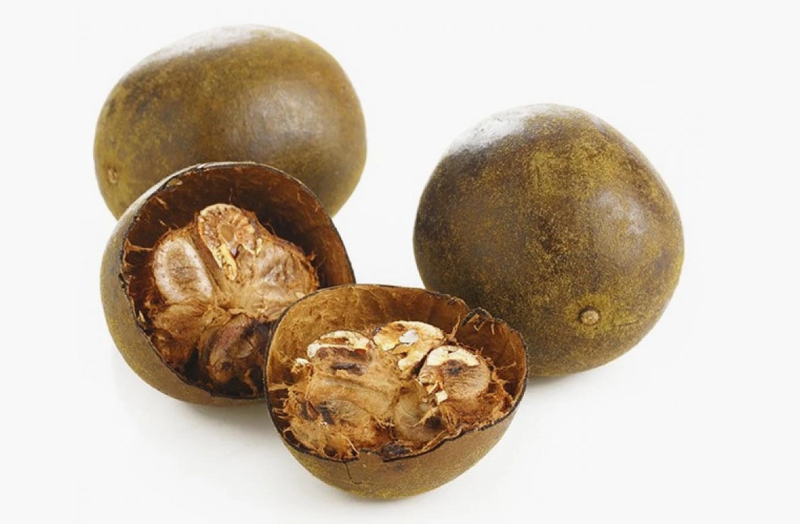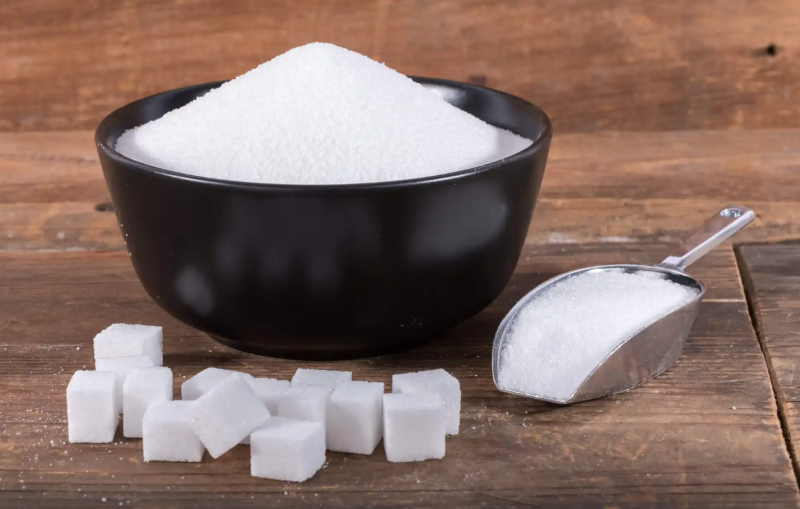
There are more alternatives every day when it comes to replacing white sugar. From honey, agave syrup, or panela, to the latest to appear, such as erythritol and stevia. Now another plant from China has been added: the monk fruit.
Although it is still challenging to find its use, it gradually spreads into sugary drinks and other products. Perhaps you have already tried one of them. But if you are unaware of the monk fruit, we will tell you much more in the following article.
Contents
What is monk fruit?
Monk fruit ( Siraitia grosvenorii ) is the fruit of a vining plant of the Cucurbitaceae family. It originates from southern China, known as luo han guo. Its name is believed to derive from its first cultivators being Buddhist arhat monks.
The first mentions date back to the 13th century in the records of Chinese monks in the Guilin region. It was used (and still is) as a traditional remedy for colds, sore throats, and constipation. However, given the difficulty of its cultivation, the plant did not spread to other parts of the country.
In the 20th century, it became known in England, and it was not until the 1980s that the first findings on its sweetening capacity were reported.
The fruit is small and round (about 5 to 7 centimeters in diameter). The skin is complex, delicate, and covered by fine hairs. Its color is yellow, green, and brown. The interior is eaten fresh, and the shell makes infusions.
The highlight of its flavor is the sweetness that is enhanced when talking about the powder and the liquid extract of the fruit. The main responsible for this property are mogrosides, glycoside compounds that are extracted from different plants and are used as sugar substitutes.
Benefits and strengths of monk fruit
Although its use in China dates back many centuries, we are dealing with a sweetener that has not been as studied as others on the market. A large part of the analyzes have been carried out on animals and, as it is a new product, it has not been possible to test the long-term effects.
However, with this in mind, it is possible to list a series of strengths and advantages arising from monk fruit extract.
It is suitable for people with diabetes.
The American Diabetes Association Standards of Medical Care in Diabetes states, “Non-nutritive sweeteners may be a good alternative to sugar, honey, or agave syrup for those accustomed to sugar-sweetened products.”
Although these do not seem to impact glucose regulation, they facilitate a lower intake of calories and carbohydrates. Therefore, they are a good option if sweetened drinks and foods are consumed.
However, this same body strongly encourages reducing the intake of sweetened drinks and foods. He suggests opting for alternatives without these additions.
It does not provide calories or flavor
Monk fruit extract does not provide calories or carbohydrates. For this reason, it is usually one of the sweeteners chosen by people who follow very low-carbohydrate diets, such as ketogenic diets.
In addition, its flavor is relatively neutral, and when exposed to heat, it does not lose its properties. So it’s a perfect sugar replacement for sweetening, cooking, and baking.
It does not usually cause digestive problems.
In principle, there are no known annoying effects derived from its intake. Some sweeteners of the same type can cause gas, bloating, or diarrhea in some people.
Presents beneficial properties
The presence of carbohydrates and some minerals characterizes the composition of monk fruit. But in addition, it contains other components such as flavonoids, phenolic acids, glycosides, and terpenes that are at the base of its therapeutic activity.
Apart from the properties recognized by the Chinese pharmacopeia, there are other studies about its benefits. As they point out in the journal Future Medical Chemistry, here are some of the most prominent:
- Mogrosides have shown the ability to lower total cholesterol and blood triglycerides in diabetic mice.
- The monk fruit can counteract the action of free radicals and prevent lipid peroxidation. This is related to a lower risk of health problems like atherosclerosis or inflammatory diseases.
- Mogrosides exert an anti-inflammatory activity since they prevent the release of some molecules, such as prostaglandins.
Different ways to use it as a sweetener
The whole fruit has a concise shelf life, and it is still challenging to find it far from the countries where it is cultivated. Therefore, the entire fresh fruit is rarely consumed and is usually used more in infusions.
The sweetener is made from an extract of the dried fruit. This can be used on any food and drink, whether hot or cold. When dosing, it must be considered that it is between 150 and 250 times sweeter than table sugar.
It is possible to test it in the following situations:
- In coffee, tea, or any infusion as a substitute for sugar.
- In soft drinks, lemonades, and juices.
- To sweeten dairy products such as yogurt, kefir, shakes, or ice cream.
- To replace sugar in preparing any sweet and dessert: cookies, biscuits, flans. In this case, it is necessary to consider that the texture, taste, and appearance may be different.
Potential Monk Fruit Disadvantages
Most regulatory bodies declare monk fruit a safe and suitable product, even for pregnant women and children. This is the case of the European Food Safety Authority (EFSA) and the United States Food and Drug Administration (FDA).
Its use is allowed as a substitute for sugar, and so far, no harmful effects derived from its intake have been observed. However, it is necessary to consider that it is a very new product, and its long-term effects have not been studied.
The most prominent risk could be in the form of an allergic reaction. People with allergies to plants of the same family (pumpkin, watermelon, or melon) should be more careful with their consumption.
Monk fruit is delicate, ferments quickly, and is problematic to grow. These reasons explain the difficulty of finding it in stores and its higher price.
The monk fruit extract is an exciting sweetener for people with diabetes. But some of the products it uses may add other sweeteners that do affect blood glucose.

Final thoughts about monk fruit
Monk fruit is a natural sweetener from a plant grown in China. In recent years it has gained fame as a healthier sugar substitute thanks to some of its benefits. It is a safe additive, suitable for deficient carbohydrate diets.
However, its cultivation and export are small compared to the increase in demand that this product has experienced. For this reason, it isn’t easy to find in most stores and is often used in the food industry to sweeten beverages.
It must be borne in mind that this is a very new product in the industry and that its benefits have not been tested on humans. For this reason, the best advice is to use it moderately and in small quantities.